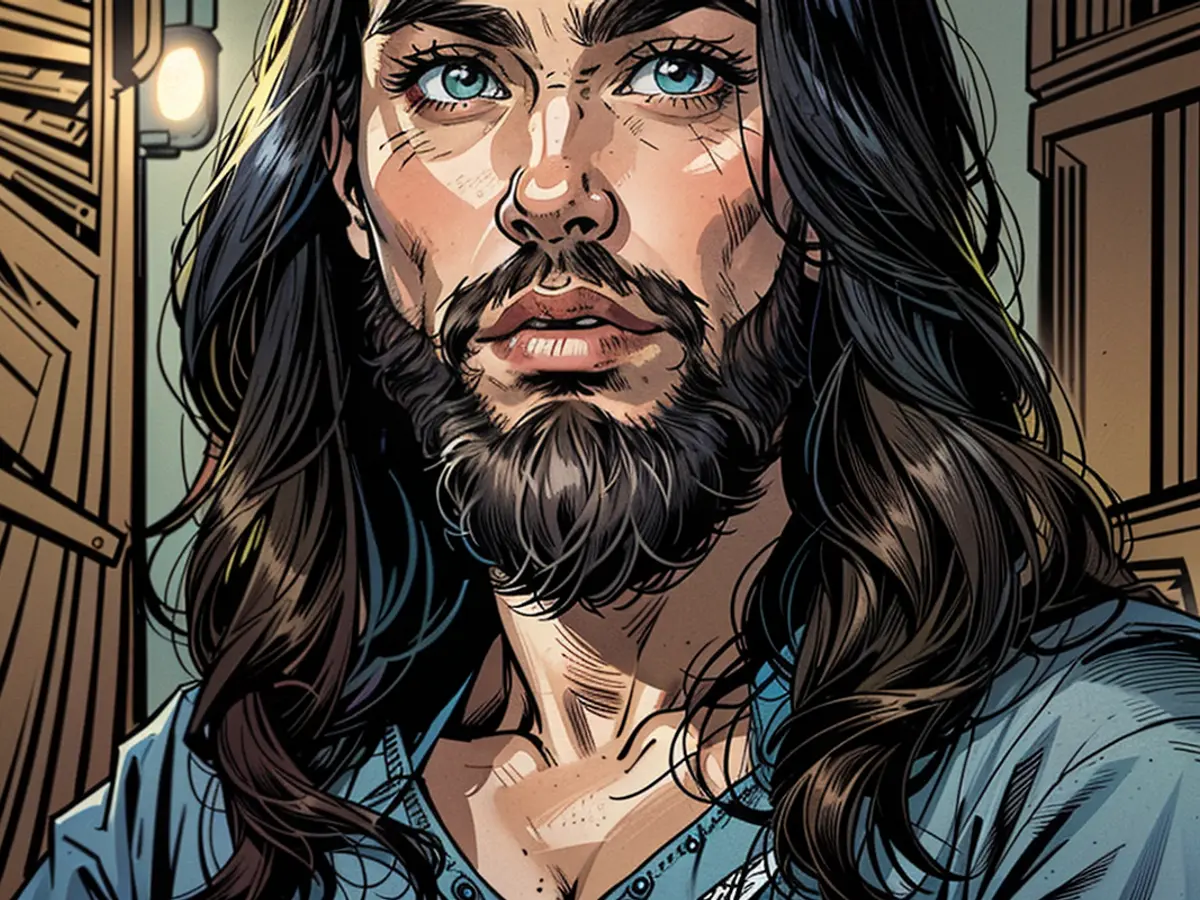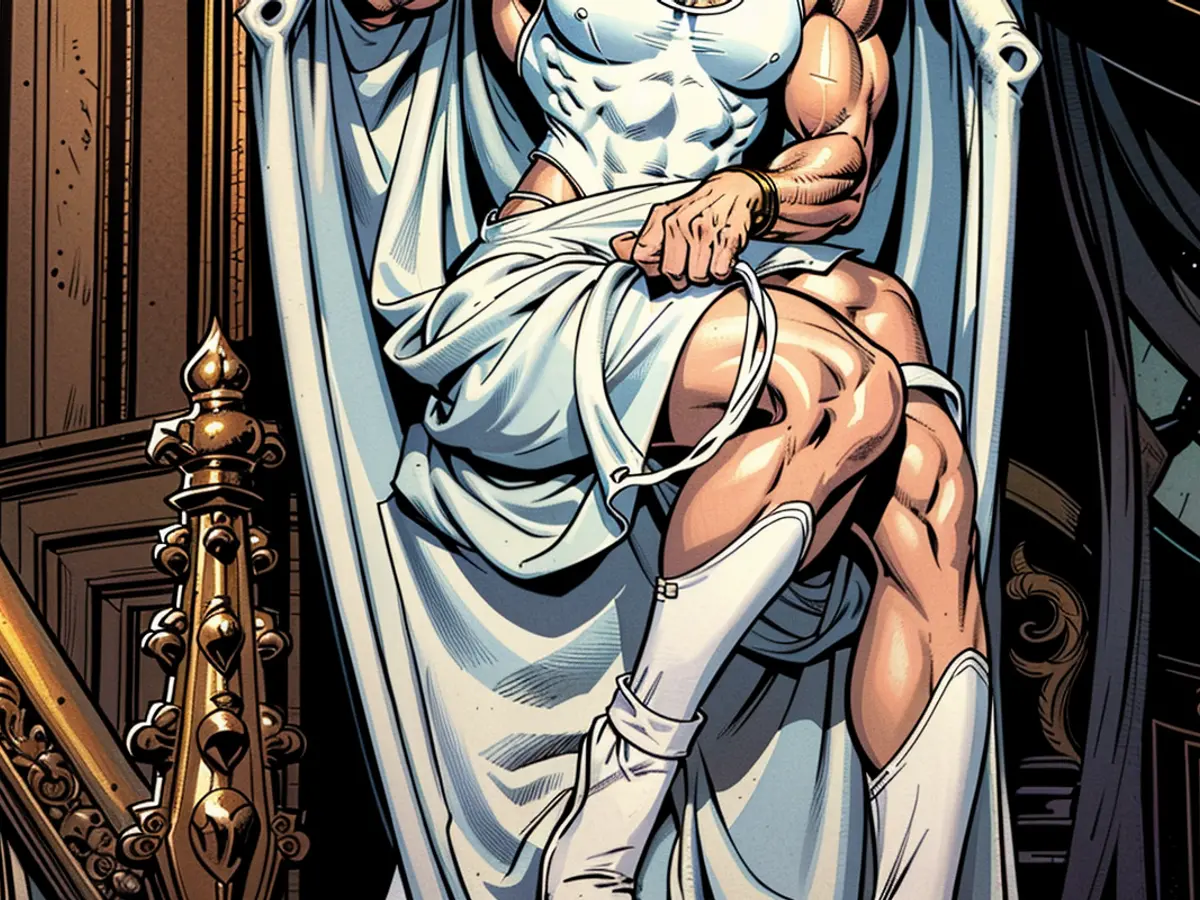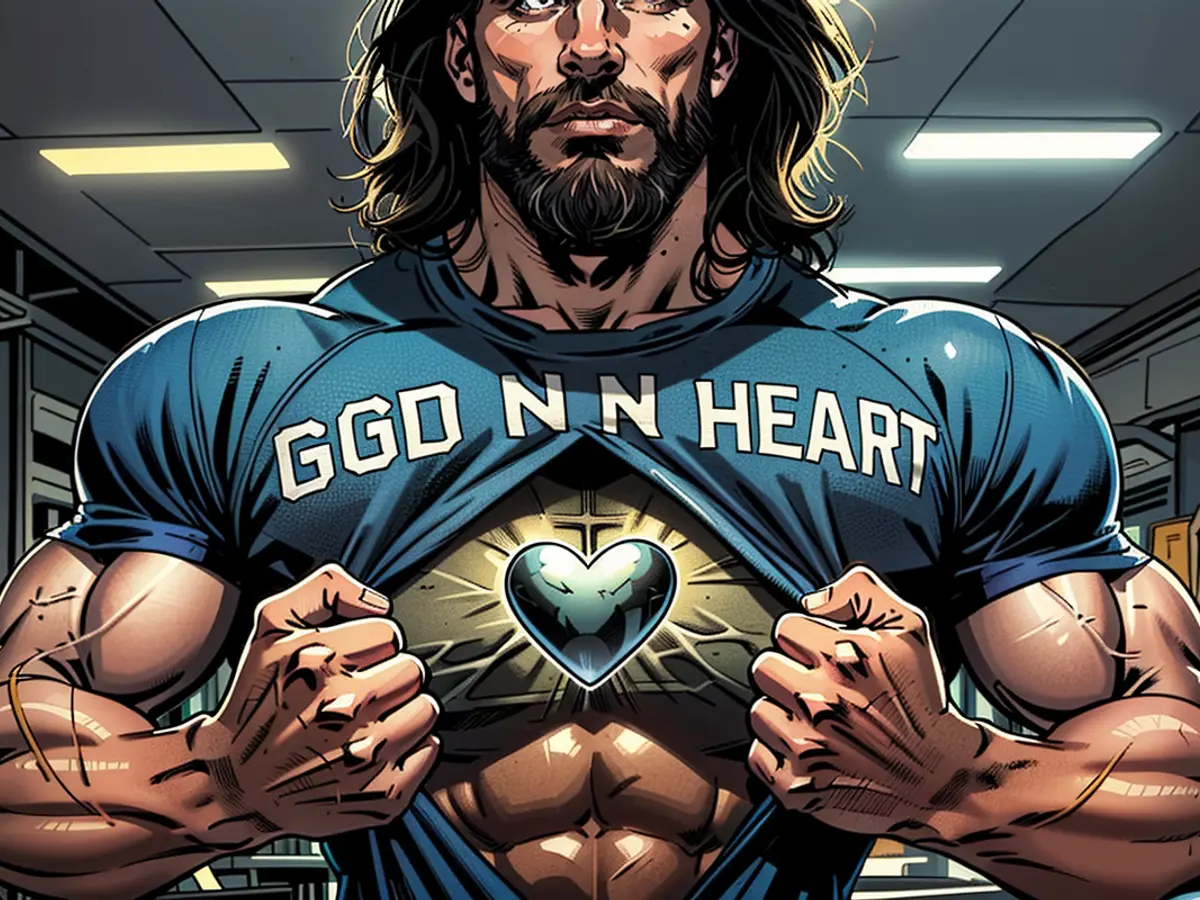AI images of Jesus are suspiciously handsome. We only have ourselves to blame
Among the funhouse images of fake children crying in the street and police officers saving inexplicably huge Bibles from the rain, countless depictions of Jesus Christ seem to take up an outsized amount of AI real estate.
It makes sense. The central figure of Christianity invokes potent reactions from billions of followers around the globe. For the last 2,000 years, faithful hands have labored to create likenesses of their professed savior, projecting onto him various theologies and mythologies combined with aesthetics of the time: Jesus suffering on the cross, Jesus as the Good Shepherd, Jesus the creator of miracles, Jesus the word made flesh, Jesus as cosmic judge.
Now, in the age of AI, Jesus can assume an infinite variety of roles with just a few keystrokes. Jesus as a durian fruit, for instance. Or Jesus battling shirtless with Satan. Sometimes, Jesus is cuddling a person in need in a hospital bed, his chiseled features and strong hands providing divine comfort.

None of these things are in the Bible, but they are alive in the minds of particularly imaginative Christians, or just those who want some easy engagement on Facebook.
What’s unsettling is how many AI-created images of Jesus are unnecessarily handsome and rugged, like one of those Instagram influencers who wears a lot of pendants and is always wandering barefoot through an island jungle.
There’s nothing wrong with that, per se. The Bible doesn’t get specific about Jesus’ looks, and certainly artists over the millennia have taken creative license when it comes to his physique (and, to a different point, his skin tone).
However, generative AI, like the kind that can create images from text prompts, doesn’t work like an artist’s brain. All of these handsome AI Jesus images are created from patterns a machine picks up from the information it is fed. What does that say about us, and how we view the figures most important to our cultural identities?
The aesthetics of religious figures
Since programs that generate AI art are trained on existing forms of art and imagery, the conundrum of handsome AI Jesus has two parts: How Jesus has been depicted in the images fed to such machines, and how the machines interpret the images they are given in order to spit out new ones.
We’ll start with the historical part first.

“Depicting religious figures in an idealized form far predates Christianity,” says art historian and former classics professor Brenda Sanderson. “Greeks and Romans portrayed their gods in a way that depicted strength and good health. While certain images of Jesus may not be intended to be sexual, they reflect a formal ideal that corresponds with the spiritual ideal.”
Sanderson also says some of these depictions merely reflect the sensibilities of the artist. The Sistine Chapel ceiling, painted by Michelangelo between 1508 and 1512, is considered one of the crowning achievements of sacred art. While its vibrant frescoes illustrate saints, prophets and characters of the Bible, it also includes a full-on depiction of God’s bare behind.
“Things like that that some may consider sacreligious today weren’t quite as scandalous at the time,” she says.
The question of whether a religious depiction is “too sexy” doesn’t stop with Jesus.
A very famous pair of sculptures created for St. Paul’s Cathedral in Liège, Belgium in the 1800s has become a beloved part of art history lore. The first, “L’ange du mal,” was created by artist Joseph Geefs, but was removed from the church because church officials worried about its effect on female worshipers and reportedly said, “the devil is too sublime.”
It was replaced by a different sculpture by Geefs’ brother, Guillaume. However, in a humorous twist, many art lovers consider “Le génie du mal” to be even more suggestive than the original.

Even today, the question of sexualized religious images in art is alive and well. In early 2024, a “sexualized” painting of Jesus by Spanish artist Salustiano García Cruz was decried as “offensive” and “evil” by critics.
“Biblical figures and saints have often been made attractive or ‘sexy’ in art history, whether it’s images of the scantily-clad young Saint Sebastian pierced by arrows, the naked body of Mary Magdalene covered only by her hair, or the muscular torso of Christ in works by Michelangelo and others,” art historian Morgan Haigh told the BBC about García’s work.

How AI interprets art
Now that we know there is a long history of humans depicting their religious figures in, well, idealized form, the prevalence of handsome AI Jesus makes more sense.
Christopher Framer, a generative AI certified programmer from Petaluma, California, explains that different AI models are trained on different pieces of art, and the outcome relies on a person’s input as well.
“From a consumer view you can’t usually tell what kind of images an AI model has been fed, but what is generated can vary on other specifications like image type — does the person specify they want a photorealistic image? You see a lot of those on Facebook.”
Framer says other inputs can greatly vary the images, like the addition of words like “strong,” “fighting,” or “power.”

“I couldn’t tell you for sure, but when people are looking to create images that elicit a specific response, they just need to add a single word or describe a situation, and that can create a huge difference.”
That’s one reason why some depictions of AI Jesus include curious details, like tattoos, bulging biceps, hairy chests or soulful dreamboat eyes.
“These programs don’t actually know who Jesus is, or what he means. They know, through what they’ve been fed, that most images of Jesus may look a certain way. Adding more into a prompt introduces more information into the image that may be at odds with what people think a religious image should look like.”

AI-generated images are becoming somewhat of a problem on social media, where engaging with a religious picture may take half a second and doesn’t necessitate a close look at the content. Many AI photos of Jesus online also include elements of patriotism or politics, which, through Framer’s explanation, alter the nature of the depiction.
There are other complications that lead to the persistence of handsome AI Jesus. Some AI art experts fear the more AI images that are created, the more the programs that run them will create a kind of “feedback loop,” where the same type of images get generated over and over again.
These images attract thousands of likes and comments as people scroll by them, despite, at times, being very obviously manipulated. Many pages offering this kind of content also contain links to questionable websites, spam-like hashtags or repeated variations of the same type of image.
All in all, it’s not a very human experience. It makes sense that their posted images of Jesus feel a little inhuman, too.
- The depiction of Jesus in AI-generated images often reflects the aesthetics we have cultivated over time, as shown by the fact that many AI Jesus images are unnecessarily handsome and rugged, a trait that is popular in certain circles and has been reflected in various forms of art throughout history.
- When creating AI models, developers often rely on existing data, meaning that the aesthetics of the religious figures, such as Jesus, in the AI-generated images can be influenced by the way those figures have been depicted in the past, which often includes an idealized and attractive representation.








